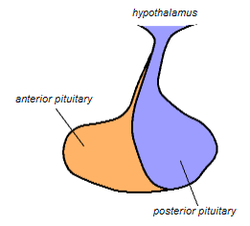As in previous blogpost (understanding life by the cycle of matter and energy in inanimate world)
we concluded that:
we concluded that:
- World (animate and inanimate, both) seems to be an interactive play of 'matter and energy',
- Dual nature of matter could be explained well as: 'matter is a condensed energy',
- As per our understanding ('law of thermodynamics'), energy 'can not be created or destroyed',
- An actual end ('annihilation') is not there,
- What we call 'death', is a phase of evolutionary change of existence; better to say: a 'gene journey'.
Likewise in animate world the duality of matter is available at all level,
i.e. from cell to organ.
Physiology is complete only by a constant conversion of matter and energy
i.e. electrical and chemical both:
('Electrophysiology' and 'Electrochemistry' explains the 'Responses' and 'Nervous Mechanism')- As a single cell functions on fundamentals of duality of matter; exerting both chemical and electrical commands to sustain and communicate within and without,
- And on further complex level, even a single organ functions again on chemical and electrical, both kinds of control,
- So be it a cell or a complex organ of a living being, here again like the material world, we find a constant inter-conversions between matter and energy.
Electrical and chemical working of individual neuron is an example of dual behavior of matter in a single cell :
The human body is made up of trillions of cells. Cells of the nervous
system, called nerve cells or neurons, are specialized to
carry "messages" through an electrochemical process. The human brain has
approximately 100 billion neurons.
#picture courtesy: http://www.dummies.com, http://en.wikipedia.org
#further reference for transmission of a nerve impulse
Neuron is an electrically excitable cell that processes and transmits information through electrochemical signals. These signals between neurons occur via synapses, specialized connections with other cells.
The key to neural function is the synaptic signaling process, which is partly electrical and partly chemical.
Neurons communicate by chemical and electrical synapses in a process known as neurotransmission also called synaptic transmission. The fundamental process that triggers the release of neurotransmitters is the action potential, a propagating electrical signal that is generated by exploiting the electrically excitable membrane of the neuron. This is also known as a wave of depolarization.
Certain brain parts of human work both ways; electrical and chemical:
The hypothalamus, as its name implies, is situated below the thalamus — a
huge collection of nuclei in the centre of the cerebral hemispheres. It
forms part of the walls and floor of the central chamber of the
cerebral ventricles, called the third ventricle. Hanging on a stalk
underneath the hypothalamus is the pituitary gland.
 Although small, this is one of the most important parts of the grey matter of the brain, for it participates in a number of vital activities. It regulates a variety of hormonal functions by action on the pituitary gland, and it exerts magisterial control over the blood vessels and glands of the body via the autonomic nervous system. It is an integral part of the limbic system,
which influences important aspects of our behaviour and even our very
survival, regulating such functions as emotion, sexual and nutritional
appetites, rhythms, and sleep
cycles. Some cells of the hypothalamus detect changes in body
temperature and chemistry, and participate directly in the control of
our temperature and chemical balance.
Although small, this is one of the most important parts of the grey matter of the brain, for it participates in a number of vital activities. It regulates a variety of hormonal functions by action on the pituitary gland, and it exerts magisterial control over the blood vessels and glands of the body via the autonomic nervous system. It is an integral part of the limbic system,
which influences important aspects of our behaviour and even our very
survival, regulating such functions as emotion, sexual and nutritional
appetites, rhythms, and sleep
cycles. Some cells of the hypothalamus detect changes in body
temperature and chemistry, and participate directly in the control of
our temperature and chemical balance.Many nerve cells in the hypothalamus have a so-called ‘neuroendocrine’ function — instead of producing transmitter substances that simply communicate directly with other neurons, they secrete chemicals that act as hormones, circulating in the blood and affecting other parts of the body. (by Laurence Garey)
ATP, molecular currency of intracellular energy transfer:
ATP can be produced by various cellular processes,
most typically in mitochondria by oxidative phosphorylation
under the catalytic influence of ATP synthase or
in the case of plants in chloroplasts by photosynthesis.
Energy is released by hydrolysis of the third phosphate
group. After this third phosphate group is released,
the resulting ADP (adenosine diphosphate) can absorb
energy and regain the group, thus regenerating an
ATP molecule; this allows ATP to store energy like
a rechargeable battery.
# picture thankfully shared:http://en.wikipedia.org and various other internet sources.









No comments:
Post a Comment